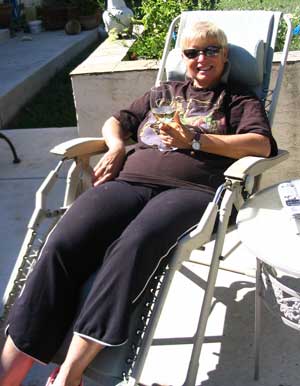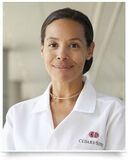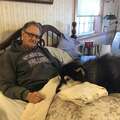Adam's Heart Valve Surgery Blog – Page 80
Help! Where Is My Tricuspid Heart Valve?
By Adam Pick on October 26, 2007
The email reads, “Adam – I was just diagnosed with severe tricuspid regurgitation. I feel stupid asking this but where exactly is my tricuspid valve in my heart. The doctor showed me a fake, plastic heart but I can’t remember right now. Please help!”
Don’t worry. I totally understand. Honestly, when I was diagnosed with severe aortic stenosis and regurgitation I was so shocked I don’t remember much of what my cardiologist told me besides, “You need open heart surgery!” That’s a tough one to forget.
Anyways, here is a human heart diagram that shows the various valves of the heart – aortic, pulmonary, mitral and the tricuspid.
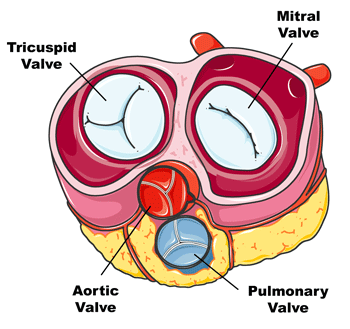
I hope this helps you better understand where your tricuspid heart valve is.
Keep on tickin!
Adam
What Musculoskeletal Issues Might Heart Surgery Patients Experience?
Written By: Adam Pick, Patient Advocate, Author & Website Founder
Page Last Updated: June 7, 2025
If there is one thing I know about going through heart valve surgery… you learn a lot about your body. From the moment you are diagnosed with the need to have heart valve replacement or heart valve repair, new words, new terms and new acronyms start flying in one ear and out the other.
At first, I called it medical mumbo-jumbo. Then, I realized I should sharpen up on my heart anatomy and learn what all these unique terms meant – bicuspid, regurgitation, leaflets, stenosis, Ross Procedure, percutaneous, catheter, mediam (broken sternum), etc.
Following surgery, the learning doesn’t stop. During the recovery, a new set of terms and tests will become part of your post-operative life.
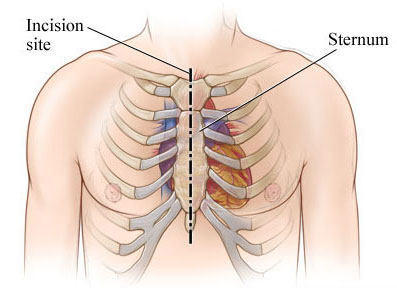
One of the terms I came to know very well was referenced by cardiologist time-and-time again. That term was musculoskeletal. Any time I raised a concern about the pain in my incision or the pain in my chest, my cardiologist would say, “Don’t worry about that… It’s musculoskeletal! You’ll be fine.”
Dr. Donald Ross & I Talk By Phone
Written By: Adam Pick, Patient Advocate, Author & Website Founder
Published: October 23, 2007
Guess who I just got off the phone with???
Yup!!!
No other than Dr. Donald Ross, the inventor of the Ross Procedure, a special form of aortic valve replacement. To learn more about the Ross Procedure, click this link.
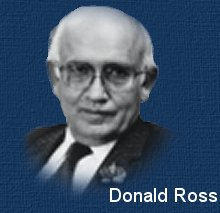
(So you know, Dr. Vaughn Starnes performed the Ross Procedure on me in 2005 at USC Medical Center in Los Angeles.)
Anyways, for being eighty plus years of age Dr. Ross is still a firecracker. The innovative surgeon was at his office working away in London.
I have to admit, it was quite surreal speaking with the man who developed the procedure that was now part of my heart. I guess it was a very good kind of surreal.
We talked a bit about how thankful I was for his innovative ideas on surgical approaches to enhancing heart health. Then, we spoke about my book, The Patient’s Guide To Heart Valve Surgery.
It turns out that Dr. Ross is on his way to China tomorrow to speak at a few heart conferences in Shanghai and some other cities in China.
Amazing, right?!!!
Related Link:
Keep on tickin!
Adam
Keeping Your Heart Surgery Recovery On Track With Recovery Milestones
By Adam Pick on October 13, 2007
Alright. You’ve made it through the surgery and your new or repaired valves are doing great!! You’re out of the hospital. Finally…you’re home. The recovery is ready to begin!
After week one, you look a little something like this after open heart surgery (if you are curious). If you have noninvasive heart surgery, the scar will be significantly smaller. This is a picture of me exactly seven days after my double heart valve replacement.
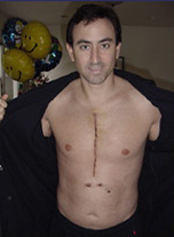
Chad Shieber, Marathon Runner Dies Due To Mitral Valve Prolapse And Heat
By Adam Pick on October 13, 2007
Over the past few years, I have been incredibly close to unwelcome tragedy relating to heart valve disorders. The word “tragedy” is the key part.
For those people who are asymptomatic, there are no warning signals. There are no mitral valve prolapse symptoms. There is no way of knowing the true impact of a mitral valve prolapse during a 26 mile race in 90 degree weather.
That was the issue with Chad Shieber who passed away during the Chicago marathon last week. While initial reports placed fatal blame on the unseasonal heat of my former hometown city, Chicago, the autopsy and medical records showed that the other conspirator of this untimely death was a defective heart valve. To learn more about mitral valve prolapse, click here.
Chad Shieber had a mitral valve prolapse. Chad Shieber had been cleared by his physicians to run the race.
This is a tough blog to write. Chad had a wife, three kids and was only 35 years old.
I am 35 years old. I am recently married.
While the similarities appear to stop there, my sadness for Chad Shieber and his family does not.
If only it wasn’t 90 degrees that day.
If only Chad stopped to take a break and walk on mile eighteen…
My thoughts and prayers go out to the Schiebers.
Adam
“What About Driving After Heart Surgery?” Asks Susie
Written By: Adam Pick, Patient Advocate, Author & Website Founder
Published: May 14, 2025
A great question just came in specific to driving after heart surgery. The question reads, “Hi Adam – Great website! Quick question. When can I drive after heart surgery? Thanks, Susie!”

How Long Does A Mechanical Mitral Valve Replacement Last?
Written By: Adam Pick, Patient Advocate, Author & Website Founder
Page Last Updated: May 6, 2025
Finally, somewhat of an easy question… (You guys have been tough on me lately!)
Well, not really.
Let me explain….
There is a pretty standard answer to the question, “How Long Does A Mechanical Mitral Valve Last?”
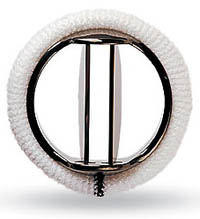
In fact, the durability of a mechanical mitral valve is one of the biggest advantages of selecting a mechanical valve versus a pig valve (porcine valve), cow valve (bovine valve) or human valve (donor) for heart valve replacement surgery. To learn more about mechanical valves, click here.
The trade-off for the long-lasting life of the mechanical mitral valve, however, is the ongoing use of Coumadin (blood thinners) and the potential sound of a mechanical valve.
That said, a mechanical mitral valve can is reported to last between 20 to 25 years. Some suggest that the life of a mechanical mitral valve may even be longer.
You have to remember two things. First, heart valve replacement surgery is a relatively new medical procedure. It’s only been within the past 30 to 40 years that heart surgery has become a standardized medical procedure.
Second, you need to remember that mechanical mitral valves are made of very durable materials including titanium. Thus, there is some uncertainty as to how long the mechanical mitral valves may last in the human body. It may very well be longer than the 20 to 25 years referenced above.
To help you learn a lot more about mechanical heart valve replacement, here is an educational video that I filmed with Dr. Aqeel Sandhu, the Surgical Director of the Bluhm Cardiovascular Institute at Northwestern Medicine, Northwest Region.
I hope that helps answer the question, “How long does a mechanical mitral valve last?”
Keep on tickin!
Adam
Robotic Catheter Technology – Cleveland Clinic Predicts Big 2008 Innovation Impact
By Adam Pick on October 3, 2007
Drum roll, please …
The innovation that will have the biggest impact on health care in 2008: robotic catheter technology.
That’s the prediction of a panel of Cleveland Clinic doctors. Clinic doctors pared down a list of about 100 of today’s coolest medical innovations to what they believe will be the most important in the coming year.
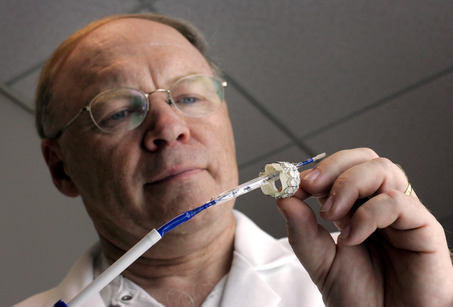
Heart Valve Pictures: Regular & Diseased Heart Valves
Written By: Adam Pick, Patient Advocate, Author & Website Founder
Page Last Updated: June 11, 2025
I’ll never forget my second opinion from Dr. Michael Chaikin, a cardiologist in Los Angeles, California.
Dr. Chaikin wanted a real-time echocardiogram done in his office… Unlike many cardiologist, Dr. Chaikin was actually present during the diagnostic test. He studied the monitor as it flashed pictures of my beating heart and pictures of my heart valves. I studied the monitor as well – with great purpose and intent. But, I had no idea what I was looking for.
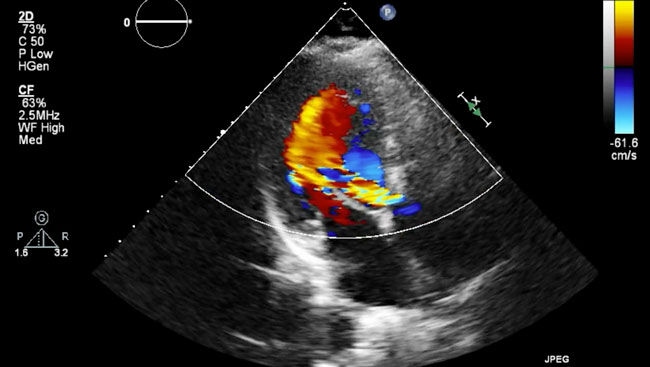
As it turns out… Eight weeks later, I would find myself having double heart valve replacement surgery via the Ross Procedure. Similar to most patients, I became more interested in heart valve anatomy once I scheduled my open heart surgery with Dr. Vaughn Starnes.
One of the questions I had was, “What does a heart valve really look like?”
Numb Hands And Feet After Heart Surgery
Written By: Adam Pick, Patient Advocate, Author & Website Founder
Page Last Updated: May 10, 2025
Every once in a while, I receive an email that triggers a distinct memory from my heart surgery recovery. As you may have read in my story, I had a double heart valve replacement at the age of thirty-three in Los Angeles by Dr. Vaughn Starnes at USC.
Following my heart valve surgery, I experienced some challenges with my body temperature. I write about this in my book, The Patient’s Guide To Heart Valve Surgery.
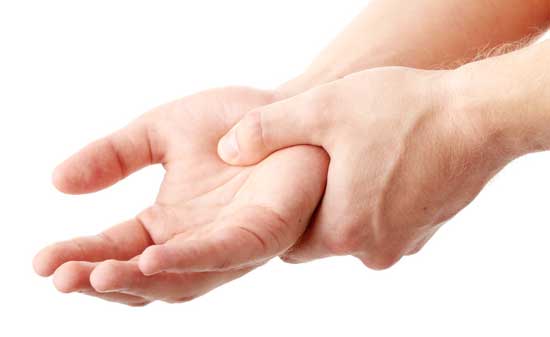
What Is The Number Of Mitral Valves In The Heart?
By Adam Pick on September 26, 2007
I just received an email asking, “What is the number of mitral valves in the heart?”
To help answer the question, you will see a human heart diagram (below) that shows a top view of the heart. As you can see there are four heart valves in the heart. The heart valve types are – aortic valve, tricuspid valve, pulmonary valve and… one mitral valve.

So the answer to the question of “What is the number of mitral valves in the heart?” is… one mitral valve.
It is interesting to note that the mitral valve is the only bicuspid valve in the heart. That means that the mitral valve has only two leaflets. As you can see, the other three heart valves each have three leaflets.
However, it is possible for the other valves to have two leaflets. Personally, I had a bicuspid aortic valve which led to my heart valve surgery. Bicuspid valves can trigger heart valve disease including heart valve regurgitation and/or stenosis.
Keep on tickin!
Adam
Excellent Patient Quote: Heart Surgery Recovery By Kathy Benson
By Adam Pick on September 25, 2007
It happens often!
I will be talking with a heart valve surgery patient when they say something ab-sooooo-lutely brilliant.
As I learned when I had my aortic and pulmonary valves replaced, speaking with former cardiac surgery patients was incredibly helpful. There is a sense of related-ness that is simply unmatched.
For this reason, I started a new category in my blog called “Excellent Patient Quotes”. I’m going to use this space to share with you some of the inspirational, wise, motivational and loving comments that I hear when I’m out speaking with heart valve surgery patients and caregivers.
Today’s excellent quote is about the recovery from heart valve surgery. As I personally experienced, recovering from open heart surgery can be extremely difficult for the patient and their caregivers.

Kathy Benson – Heart Valve Surgery Patient (Minnesota)
Anyways, Kathy Benson from Minnesota recently had an excellent quote about mis-managing your expectations of recovery and comparing yourself to other patients. Here is what Kathy revealed:
“Don’t gauge your surgery and recovery on others. Each surgery is unique and each patient will handle things in a different manner. It seems that patients strive to become normal as fast as they can. What is normal? We will forever be heart surgery patients.”
In my opinion, that could not be more true.
Keep on tickin!
Adam
Ross Procedure Complications?
Written By: Adam Pick, Patient Advocate, Author & Website Founder
Page Last Updated: May 20, 2025
After I was diagnosed with severe stenosis and regurgitation in my bicuspid aortic valve, I was required to make a pretty significant decision.
Since the echocardiograms showed that my aortic valve was beyond heart valve repair, I needed heart valve replacement surgery. (FYI, I had two echocardiograms to confirm my heart valve condition. I highly, highly, highly encourage you do the same. Second opinions are critical.)
That said, I had to answer the question, “What type of heart valve replacement surgery should I have?”
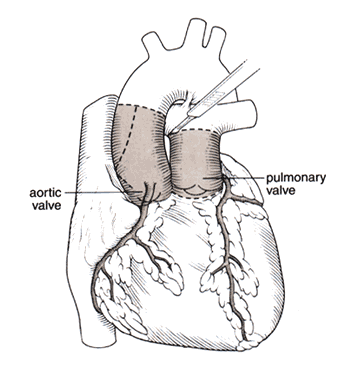
The Ross Procedure
Vicodin Addiction, Opioid Use And Heart Surgery… Beware!
Written By: Adam Pick, Patient Advocate, Author & Website Founder
Page Last Updated: June 7, 2025
I’m just getting back from dinner at my mother-in-law’s house. Bonnie really is such a great cook! She made this cheese, blintz souflee that was yummm-eeeeee.
Anyways… During dinner, I started speaking with Robert, a retired pharmacist. We started talking about heart valve surgery and the problems I had during my recovery from double heart valve surgery (specifically cardiac depression). I mentioned my post-operative issue with Vicodin and Robert became very intrigued by the discussion.

Robert used to work as an I.C.U. pharmacist. He went on to tell some really interesting statistics about Vicodin and heart surgery patients.
Specifically, Robert told me that Vicodin is the preferred pain medication administered following cardiac surgery. Are you ready for the statistic that blew my mind?
For every ten patients who use Vicodin regularly following heart surgery, one of those ten patients become addicted. One in ten! Or, 10% of heart patients have an addiction to Vicodin!
I guess I was part of that ten percent group. Looking back on it, there was nothing fun about my Vicodin issue.
Related Links:
- Heart Surgery Innovation: Rapid Recovery Protocol 2.0
- Enhanced Recovery After Heart Surgery: Top 5 Facts
- Surgeon Q&A: Top 5 Complications After Heart Valve Surgery
Keep on tickin!
Adam
What Is A Xenograft?
By Adam Pick on September 21, 2007
I don’t know about you… But, when I was diagnosed with severe aortic stenosis and valve regurgitation I became a heart valve research fanatic. I read up on every possible heart valve option, surgical procedure, the top cardiothoracic surgeons, etc.
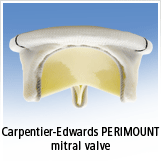
Anyways, the term XENOGRAFT appeared during my research on heart valve replacement. So, surprise… surprise… I just checked my email and guess what I found? An question that read, “Adam, Do you know what is a xenograft?”
According to MedicineNet.com The proper definition of a xenograft is a surgical graft of tissue from one species to an unlike species (or genus or family). For example, a graft from a baboon to a human is a xenograft. The prefix “xeno-” means foreign. It comes from the Greek word “xenos” meaning stranger, guest, or host. (Xeno- and xen- are variant forms of the same prefix.)
Can I Really Get A Pig Valve Replacement?
By Adam Pick on September 19, 2007
Yes. It’s true… For patients requiring heart valve replacement surgery, one of your surgical options will be a pig valve replacement (also known as a porcine valve and a bioprosthetic heart valve).
I’ll never forget when I was diagnosed with severe aortic stenosis (AS). That was a difficult experience. Open heart surgery was definitely not in my “life plan”. The challenge of digesting that diagnosis was compounded when I learned that a pig valve might offer my dilated heart relief. To learn more about aortic stenosis, click here.
I remember thinking, “HUH??!!! A PIG VALVE REPLACEMENT? YOU WANT TO PUT A PIG VALVE IN MY HEART?”
As I would later learn, pig valves have been used as human heart valve transplants for over twenty years. Companies including Edwards Lifesciences and St. Jude Medical are the leading pig valve replacement manufacturers. Interestingly enough, cow valve tissue is also used in the construction of pericardial heart valve replacements – known as bovine valves.
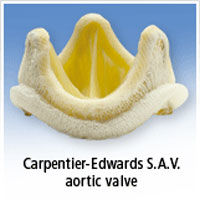
Are Infections Common During or After Heart Valve Surgery?
Written By: Adam Pick, Patient Advocate, Author & Website Founder
Page Last Updated: June 9, 2025
Earlier today, I received an email with a pretty interesting question that reads, “Do you have any statistics about heart valve operations and whether or not surgery infection is common?”
As always, I love questions that I have never heard before. This question about heart valve operations and surgery infection was definitely a new one.
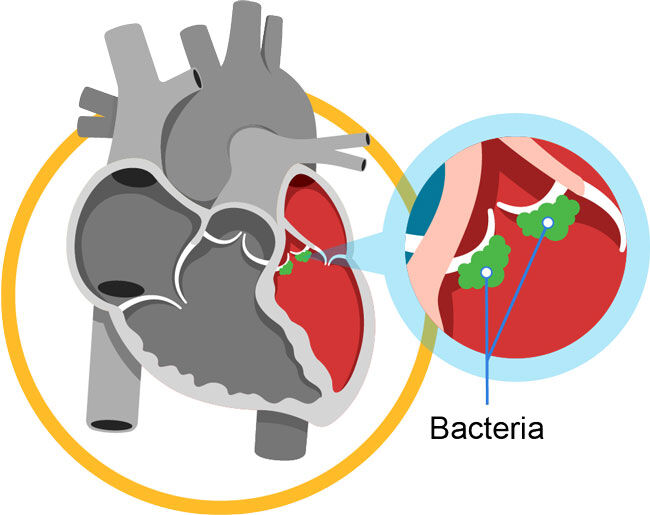
Do Patients Make Lemon Out Of Heart Valve Surgery Lemonade?
By Adam Pick on September 18, 2007
When it comes to heart valve surgery, I know that the human spirit is resilient, creative and inspiring.
“What the hell is Adam writing about?” you may be wondering.
Well, hold on now! Give me a moment to explain.
Everyone I know will experience many obstacles in life. For me, one of those low-points was the day my cardiologist told me that my heart was dilated and I needed aortic valve replacement.
“Ya-ya-ya-ya-ya mean, oh-oh-oh-oh-open heart sur-sur-sur-surgery?” I queried my heart doctor in stuttering disbelief.
In that moment, a unique fear struck me. Maybe it struck you too? Several questions pulsed through my conscious – “Am I going to die?” “Will I surf again?” “How long will I be out of work?”
And lastly… “Why… Oh… Why… Did I get a lemon for a heart?” (Okay, maybe the thought wasn’t that dramatic.)

Joke: A Cardiac Surgeon And A Car Mechanic Joke
Written By: Adam Pick, Patient Advocate, Author & Website Founder
Page Last Updated: June 7, 2025
Nothing like a little heart valve humor to start the weekend, right?
I hope you enjoy this… It got me to chuckle!
Here goes nothing!
So… A mechanic was removing a cylinder head from the motor of a Harley, when he spotted a world-famous heart surgeon in his shop. The heart surgeon was waiting for the service manager to come take a look at his bike.
The mechanic shouted across the garage, “Hey Doc can I ask you a question?” The famous surgeon, a bit surprised, walked over to the mechanic working on the motorcycle.
The mechanic straightened up, wiped his hands on a rag and asked, “So Doc, look at this engine. I also can open it up, take valves out, fix’em, put in new parts and when I finish this will work just like a new one. So how come I get a pittance and you get the really big money, when you and I are doing basically the same work?”
The surgeon paused, smiled and leaned over, and whispered to the mechanic, “Try doing it while it’s running.”
Related Links:
- Joke: The Human Body and a Man’s Thumb
- Friday Fun: Why Do Boys Need Their Parents?
- Pig Valve Replacement Humor
Keep on tickin!
Adam
Patient Discharged! Sharon Slattery Plans To Skydive On 61st Birthday!
By Adam Pick on September 13, 2007
There is nothing better than receiving an email from a patient following their surgery and hospital discharge.
Today, I received an email from Sharon Slattery, a reader of my book who just had heart valve surgery. The words in her email were absolutely powerful.
Sharon’s attitude towards her procedure has always been amazing. After she read my book, she wrote me an email telling me that she had plans to sky dive on her 61st birthday in January, 2008.
